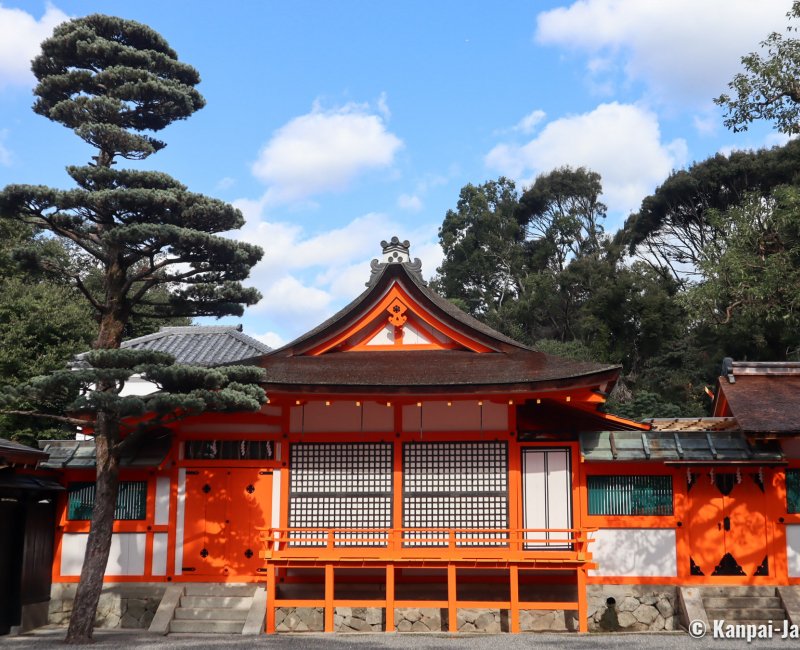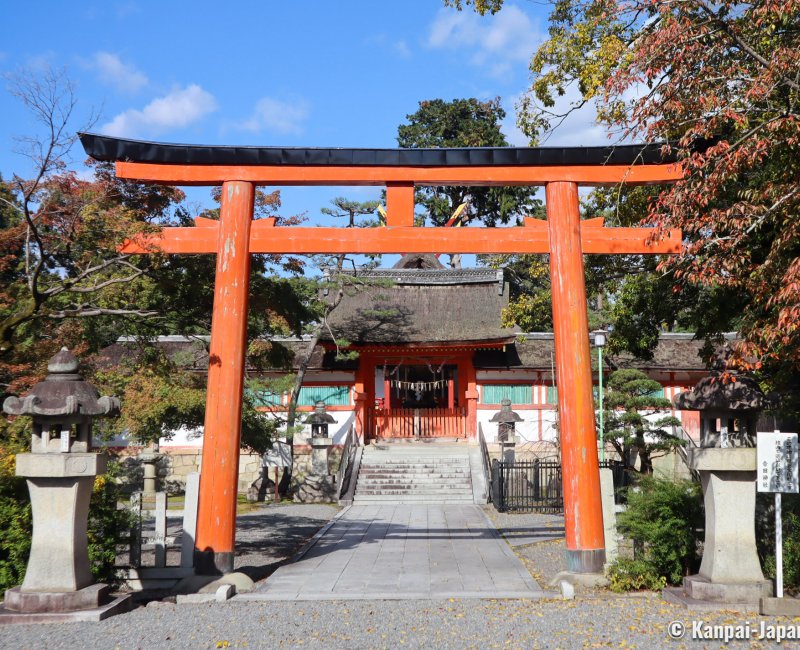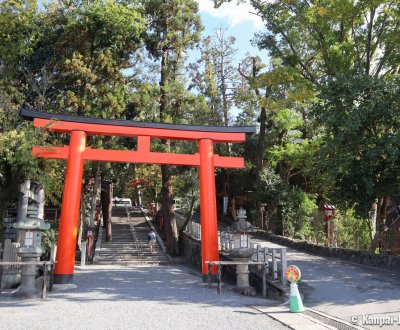Yoshida-jinja
A Forest Stroll in the Heart of Kyoto
Yoshida-jinja is a Shinto shrine beneath the trees located in the east of Kyoto, up a summit of the Higashiyama Mountain range. Little known to tourists, it is mainly visited by the locals for celebrations and rituals that punctuate their everyday life.
The shrine on Mount Yoshida was built in 859 by the Fujiwara family as a protection to the imperial capital at the times of Heian-kyo (today’s Kyoto). It is thus dedicated to Kasuga-no-kami, the Fujiwara clan’s tutelary god, that was moved from Nara’s Kasuga Taisha Grand Shrine. Additionally, a visit to Yoshida-jinja is said to be equivalent to praying no less than 3,000 kami deities at the same time.
Later, emperor Murakami (926 – 967) designated Yoshida-jinja as one of the most influential shrines of the Heian period (794 - 1185) and messengers of the imperial power were sent there to inform kami deities of the important developments into the mundane world. The sacred grounds also shelter the grave of Fujiwara no Anshi, empress and spouse of Murakami.
The site is also known as the place where priest Yoshida Kanetomo (1435 – 1511) founded the Yoshida (or Yuiitsu Shinto) doctrine that considers Shinto mythology independent from and equivalent to Buddhism.

A shrine of imperial importance forsaken by tourists
Initially located on a land that is now Kyoto University’s campus, the shrine was moved slightly to the south following the Onin war (1467 – 1477). Hidden by the forest and secluded form the large avenues of the city, Yoshida-jinja is not necessarily easy to find. One can wander sometime in the alleys climbing the mountain before finding the entrance of the shrine, despite its large vermilion torii ⛩️ gate showing the way.
It is one of the reasons why, despite its religious importance and its location close to the Heian-jingu and Ginkaku-ji, Yoshida shrine is little roamed by tourists. The site is however well-known by the locals who come in large numbers to attend:
- Traditional celebrations such as Setsubun (early February) or the New Year; and,
- Daily Shinto ceremonies, such as weddings.
Beside these highlights, the shrine’s large alleys are generally empty and quiet.

Pavilions and vermilion torii gates beneath the trees
Many small vermilion pavilions are scattered in Yoshida-jinja’s precincts, in the forest. The main hall honden was built in the Kasuga-zukuri architectural style. The octagonal pavilion Daigengu is also worth the visit, although it is viewable only a few days per year.
Sightseeing Yoshida-jinja is particularly enjoyable in summer to benefit from the shade of the trees and in autumn 🍁 when their foliage reddens. A few cherry trees 🌸 also bloom at the beginning of spring.
Exploration of Mount Yoshida is recommended for travelers staying several days in Kyoto or who are looking for quietness and nature. An occasion to perform a little hike in the heart of Kyoto.

